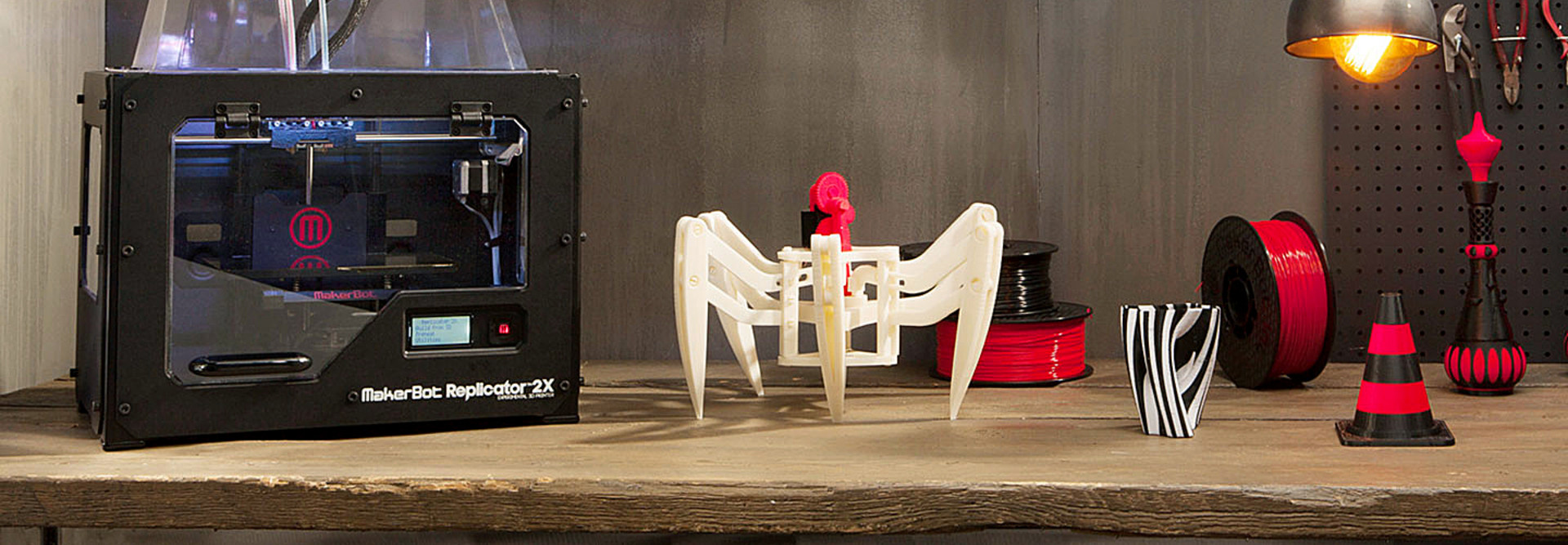Review: MakerBot Replicator 3D Printer Excels at Small and Durable Designs
The relatively inexpensive technology behind 3D printing is driving its growing impact on manufacturing. Businesses are constantly discovering new applications for 3D printing by using mostly off-the-shelf equipment.
The MakerBot Replicator 2X Experimental 3D Printer is an advanced model that can create strong and intricate real-world objects in a manner that just a few years ago would have required outsourcing to an engineering firm.
The MakerBot requires more skill to operate than a traditional 3D printer, but the vendor software helps simplify some complicated tasks. Designs can also simply be loaded into the printer via the USB cable to begin the creation process quickly.
The Replicator has two print heads instead of the standard single head found in most SMB units, allowing users to load two different color spools of ABS plastic and weave the colors through the design in a single print run. The output area is also enclosed in clear plastic to keep temperature differences from affecting objects being created.
Cooling is uniform, and the device is programmable with pauses to allow objects to be created without shrinking or cracking due to environmental factors.
Putting the Replicator to the Test
We tested the Replicator with some intricate designs, including hinges and snaps not normally created with 3D printers. The ABS plastic was up to the task. The button snaps and hinges showed no signs of wear after repeated use. Because the print heads can make fine strokes — down to 100 microns in size — it can create detailed objects, including prototypes of new inventions. We created a circuit board map using green and gold plastic that almost could have passed for the real thing.
Print times were as expected for melting and reforming plastic. A button or security badge took about 15 minutes, depending on size and complexity, while a full-scale model of the U.S. Capitol finished in a little more than 12 hours. The Replicator is perfect for SMBs looking to create nearly any object out of ABS plastic.
How Strong Are the Created Objects?
The MakerBot Replicator 2X Experimental 3D Printer uses ABS plastic as its substrate, but we were curious about how tough the created objects could be. To answer that question, we printed out several tools –– a large knife, a screwdriver and a lug nut wrench –– using blueprints found online.
The knife was surprisingly versatile, able to slice open cardboard boxes with ease. Our model had one bladed side and one serrated edge. We found that the serrated edge was able to saw into a shipping box without any problems at all, although it wouldn’t make much more than a scratch in plywood. The edge of the blade maintained its sharpness –– it was quite sharp due to the Replicator’s ability to make very fine edges –– after cutting through everything from packing tape to tomatoes. It’s unsettling that this potential weapon would not be detected by a metal detector, but in the right hands it would work well as a tool.
The screwdriver fared a bit worse than the knife. While it easily removed screws set into plastic furniture, such as an office chair, more heavily embedded screws didn’t budge and instead warped the end of the tool pretty quickly.
Surprisingly, the wrench was the best of the lot. It was thicker than the other tools and took almost two hours to create, but it worked well. At less than half the weight of a metal tool of the same size, it successfully loosened a rusty and tightly wedged lug nut on a truck’s tire.
The U.S. Army reportedly experimented with tool replication on 3D printers in Afghanistan several years ago, and it’s easy to see why. While the primary purpose of a 3D printer at a small business might not be making tools, it could prove to be an asset if a needed or unique tool can’t be found.









